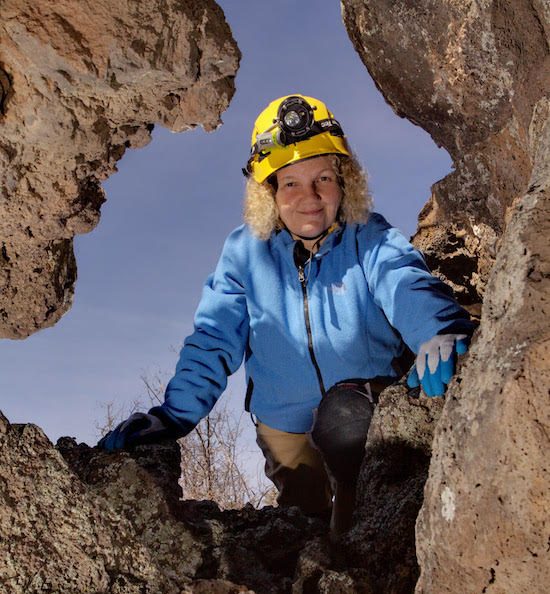Visiting UNM biology associate professor studies bats in Carlsbad Caverns
Visiting University of New Mexico Biology Associate Professor Dr. Diana Northup studies the external microbiome of bats at Carlsbad Caverns National Park to detect potential natural defenses against the fungus Pseudogymnoascus destructans, which causes white-nose syndrome (WNS), a common bat disease.
Northup currently has three Colorado Plateau Cooperative Ecosystem Studies Unit (CPCESU) grants for research projects. They are “Identifying Potential Impacts on the Ecosystem of Built Environment Within Carlsbad Cavern,” “Assessing Implications of Low-Level Pseudogymnoascus destructans Detections in Three Parks (CAVE, ELMA, GRCA),” and “Evaluating the Impacts of UV-C Treatment for Eradication of Pseudogymnoascus destructans on Cave Microbial Communities in Three Parks.”
Bats serve as a critical part of the New Mexican ecosystem, pollinating several plants and eating intrusive insects — saving farmers money otherwise spent on insecticide.

According to the U.S. Fish and Wildlife Service, White-nose syndrome (WNS) has killed more than 6.7 million bats since 2007. New Mexico is at risk to the invasion of this disease-causing fungus, with infected bats in adjacent Texas.

“Working with a bat biologist, Debbie Buecher, from Tucson, Arizona, I work to sample bats and their waste from caves and on the surface above the caves,” Northup said. “In the lab, Jenny Hathaway, a research scientist in my lab, works her magic to extract DNA from the bats swabs and do initial testing for the presence of the fungus that causes WNS.”
Tracking this fungus will allow Carlsbad and other sites to come up with management plans to contain the disease.
Northup’s lab also cultures bacteria living on the bats’ fur and skin in order to test for their ability to kill the Pseudogymnoascus destructans fungus. All of this work is done closely with the National Park Service and the Bureau of Land Management to protect their bats.
“This research is a great opportunity to see and study the diversity of bats that inhabit Carlsbad Caverns National Park and other areas of New Mexico and Arizona — one of the richest regions for bat diversity,” Northup said. “The possibility that we could help the bats survive this deadly fungus motivates me to keep going with this research.”

Northup and UNM Biology Masters Student Nicole Caimi isolated more than 3,000 bacteria from bats, and the lab has been able to discover several species of Streptomyces, a bacterial genus known for its production of antibiotics that can kill a variety of pathogens. From these isolated Streptomyces, Paris Hamm, a UNM Biology graduate student, and colleagues characterized several new species of the Streptomyces.
“Streptomyces have been shown to kill the WNS fungus in the lab. We hope that some of these new species of Streptomyces will be tested by other groups in the field to see if they can be effective in killing the fungus in the bats’ habitats,” Northup said.

